

Date: 2/17/2021
Author: Kent Moors, Ph.D.
This edition of the Classified Intelligence Brief “Spy Tales” is going to be quite different and unlike anything I have written previously. It results from an agreement made Monday with “Mother.” It will allow me to talk a bit about Vietnam (many matters remain off limits) but I am also required to put it all in “a broader personal history context.”
OK, since several CIB readers have requested to know something more about my background, where I grew up, and how I ended up here anyway, the following will probably fit that bill.
It will be rather long and the most personal thing I have ever set to paper. Putting this in words also turns out to be some good therapy.
This rendition likewise reflects an academic tradition from which I come. There, periodically, members would have to defend how they have lived life, the choices made, and the values held dear. It is called “A Giving of Accounts.”
This is the bare bones of where I come from and who I am, at least the initial chapter of my personal Giving of Accounts.
I hail from the Berkshires in a far northwestern corner of Massachusetts, five miles from Vermont and seven miles from drinking at eighteen (legally known as the State of New York). When I was less than three years old, we moved to Oklahoma while my father was stationed at Fort Sill during the Korean War.
My (real) mother did whatever she could to keep the family together after the move back home and the divorce. But I grew up in what could best be described as “Québécois ethnic poverty” in the maternal family’s extensive French-Canadian enclave encompassing the tristate area of my upbringing. Everybody aspired to be very low middle class but never made it. Jobs were tough to come by and a pervasive feeling of failure permeated everything.
Between the ages of six and sixteen, my mother, my brother, my grandmother, and I moved nine times within an area of less than a few square miles. To say we were poor was an understatement. We were one of those families receiving a turkey from the parish each Thanksgiving and clothing from the church drive at Christmas.
Entering Roman Catholic religious life (I had cousins who were priests and nuns; several of the latter actually taught in the elementary school I attended) or the military (many here as this was a very gung-ho family) were the only ways out of chasing occasional low paying jobs in the local mills and getting drunk on weekends.
Nobody from among the several hundred relatives I knew up close and personal had graduated from high school, much less went on to college. I was the first to do both. My brother was the second.
But I did it somewhat unconventionally (and, as it turns out, somewhat out of order).
I was “blessed” (“cursed” seemed more the point when I was young) with an extraordinarily high IQ (169 in the initial test; 173 when the government retested me), a photographic memory, a high order mathematical ability, and an extreme antipathy for the economic misery I saw all around me.
When given an option to break out, I took it.
There was a Federal program for gifted children in the early 1960s, sort of a parallel to the programs for disadvantaged youth. The problem was most of the participants came from upper income families (those from zip codes like 90210). The government needed some designated poor kids.
Finally, a list I was high on.
At the age of 13, I entered the program and was sent to Williams College. Considered the best liberal arts college in the country, it was also a few miles from my home. Over the previous several years I would often bicycle across campus and sneak into the back of lecture halls. Most of them had a high wall to support the last row of seats. I could hide and listen.
Now I was supposed to go there as a student.
Each morning I would walk to a home room at my local Catholic school (where all grades from 1-12 occupied the same three-story building), have a car pick me up, drive the five miles to campus, and be escorted from one class to another by a dean’s staff member.
I knew nothing that I had not shown myself in books. Knew about faraway places from maps digested and histories read. But I had never traveled, gone to a play or the ballet, or spent any time inside a museum.
Fortunately, Williams had them all. The Adams Theater on campus was the summer residence for many of the folks from Broadway; Jacob’s Pillow was the creative school of the New York Ballet; and the Clark Art Institute was in easy walking distance.
The Clark has an exceptional (and eclectic) collection, including the famous Gilbert Stuart portrait of George Washington that ended up on the one-dollar bill.
Two of my favorite other locations were a short journey away: Tanglewood (the summer residence of the Boston Pops) along with a place nearby where I grabbed my first real job (at barely 13) and an introduction to why some social issues are worth fighting for. Of all the experiences in my early life, this one had the biggest impact in how I would view the world.
This was Pete Seeger’s “Music Barn,” an amazing working studio of traditional American folk music performance and history founded by the most genuinely human person I ever met. It was experimental in every sense, free form, comprised of several buildings at which artists would just show up and play. Rarely would there be any formal concert as such unless a need arose to raise money for a cause. There were also lectures and poetry recitals, along with authors trying out works in progress.
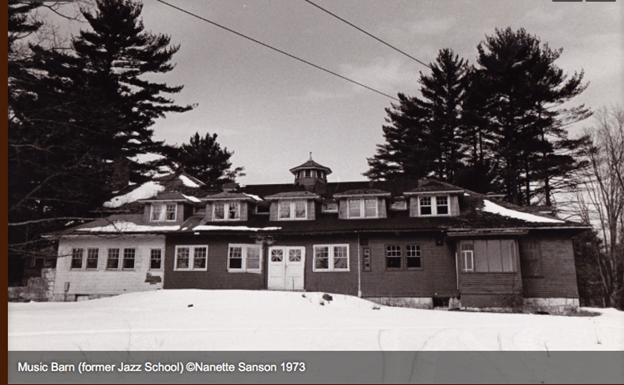

Aside from hanging around Pete (an education in itself), I met some other famous people there: Theodore Bikel and Burl Ives (both great singers of American folk music and actors); Josh White; Dave Van Ronk; Buffy Sainte-Marie; Joan Baez, Judy Collins, Peter Yarrow (from Peter, Paul and Mary), an ailing Woody Guthrie (his son Arlo also hung around, shortly to put Alice’s Restaurant down the road in Great Barrington on the map), a young Gracie Slick (before she went back to the Bay Area and Jefferson Airplane fame), and Bob Dylan.
Pete was probably more responsible for Dylan’s rise to prominence than anybody else. Baez and Dylan also carried on a rather open affair in those days until they very publicly broke it off one summer at the Music Barn.
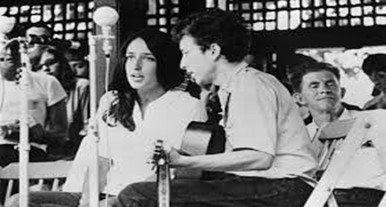

I would spend a lot of free time there. On more than one occasion, if my mother was trying to find me, she would just call Pete first.
He was certainly a communist early on, earning him a blacklisting that cost him a concert career and access to mainstream music venues. Pete was passionate about many things. He also was very circumspect about subjects like god and religion. But I did not care in those days. I just wished Pete had been my dad.
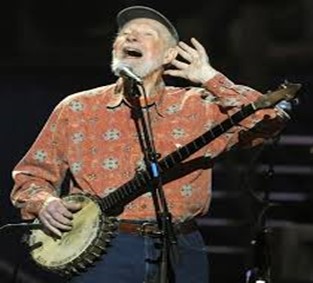

Pete Seeger died seven years and three weeks ago (January 27, 2014) at the age of 94. He had retired to Beacon in the lower Hudson River valley of New York, crusading until the end against pollution in the river and for a time being a staple of the Occupy Wall Street movement (while doubling on Sesame Street).
The family had not planned anything. But at the last-minute they agreed to a “small service” at a local funeral home. There was a photo of Pete, one of his banjos, and his ashes in a vase. It was supposed to be a brief, simple remembrance.
Well, that was never going to work.
Over a 1,000 of us showed up. Pete would have loved it. At one point, everybody just broke into singing “Where Have All the Flowers Gone,” probably his most famous (and most copied) early song.
And then we carried his ashes to what all thought was to be his final resting place. Apparently, his ashes were later moved and somebody in the family was rumored to be the custodian. Leave it to Pete.
I felt culturally retarded at Williams, although I was adopted as a kind of mascot by one of the fraternities. They introduced me to some aspects of life I never knew existed to the disdain of my mother and the nuns in my family. The college administration would later close the fraternities but I am reasonably certain I had nothing to do with that.
I was very out of place in most courses, able to do the work, but not having any of the experiences others in class could seemingly without effort bring to a reading or a discussion.
Fortunately, I was a whiz at math. So, I majored in theoretical physics, graduating at 16. For some reason, they also gave me a high school degree at about the same time (apparently having something to do with requirements from the Massachusetts Department of Education in Boston.)
OK great, now what?
Went back home where my family was quite proud but everybody else regarded me as an oddity. There were still no jobs and something called the Vietnam War was brewing. By 1966, there were gold star mothers in our extended family and up and down the streets around our tenement.
There was no guidance provided to me by anybody. So, I decided to get the hell out and go back to school for another degree. This time I would choose. Concluding the seminary was not my style (had already decided I liked girls), the military was the usual other way out in my family. But once again, I would do this one a bit differently.
I bypassed a scholarship to Boston College secured for me by one of my distant cousins (a priest, of course) and another gained on my own to King’s College in Eastern Pennsylvania.
Instead, I took a full ride to the Virginia Military Institute smack in the Shenandoah (where, it turns out, they were still fighting the Civil War). I remained there until managing to break both legs in an early morning accident in the barracks (fell down a full flight and a half of stone stairs).
About a month later, while I was still in the post hospital, my mother’s health deteriorated. I decided to move back home and pick up a scholarship that had been offered at Saint Anselm College in New Hampshire, shuttling between dorm and home on most weekends. Fortunately, I was able to transfer a military cadet deferment to a student one. That would keep me out of Nam…but only as it turned out for a little while.
I triple majored at St. A’s in politics, philosophy, and classical Greek. Decided to catch up on subjects I never mastered at Williams.
There were a number of other adventures. In 1968, I served on several political staffs, including as an advance man for Robert Kennedy’s presidential campaign. I moved on to be a founder and national executive committee member of the National Student Coalition following the senator’s assassination.
I also excelled as an intercollegiate debater. After winning a number of tournaments, I was named the 1970 National Collegiate Speaker of the Year.
The last year at college I married my first wife, a marriage that would last two decades but fall under the pressure rather early from what would become my other career. I regarded it as serving my country. She came to see it as my mistress.
1970 was also the first year of the Vietnam Draft Lottery. Receiving a very high number, I knew I would not be drafted. But, as I would tell my university students years later, be careful what you wish for.
Literally, the day after the initial draft lottery, the US Department of State (DOS) came to recruit me into a classified project. They cited my combination of skills, memory, military training, languages (six at the time, but that included classical Greek and Latin), along with some other factors arising from VMI tests that indicated I would be “a natural” for this line of work.
They did not mention, and I learned only years later, that they were also looking for individuals who fulfilled a profile called “the odd man out hypothesis,” pioneered by research initiated toward the end of World War II. Reducing it to its most simple form the profile sought to identify sons of bitches who will complete assignments regardless of the cost…to anybody.
It turned out I fit it like a glove.
Before continuing, some background. Intelligence operations remain classified based on statute. Legislation was passed during the Reagan administration to put an additional eleven-year statutory silence period for some ops above the twenty-year period established previously. After the designated period ended, information can be released unless there are subsequent events or ops requiring that classifications be incorporated and extended.
The statutory period began at the completion of an assignment and was assignment specific. The specific operation described below was declassified in 2002. Several others were reclassified, while a number remain classified today in what turned out to be my multi-decade career.
I was recruited into the Office of Intelligence Coordination (OIC) in the DOS Bureau of Intelligence and Research (INR). INR has traditionally developed intel for the Secretary of State, ambassadors, and related matters reviewed by the National Security Council (NSC).
However, on this occasion, for the only time in its history, INR was designated a “tasked organization,” that is, responsible for receiving presidential directives and charged with executing covert (source of action hidden) or clandestine (action itself hidden) operations.
I had ops and tactical training in DC, a stint at Camp Perry (the CIA training facility outside Williamsburg, VA, better known as “The Farm”), followed by the Office of Naval Intelligence (ONI) in Suitland, MD, a Vietnamese language course at Monterey in California (I usually was MIA for this, preferring to sleep on the beach; learned the language on the fly by hiring a tutor in country), and a brief stay at a forward analytical base (FAB) outside of Tokyo.
DOS had recruited sixteen people for twelve slots. They went nationwide for specific individuals already identified. Early in the DC training, we picked assignments at random. I arrived in country as one of twelve team members on 24 October 1970. My operation had a seven-month time limit (weather and other factors). All team members were to be moved into theater together, evacuated individually to FAB as assignments ended, and returned state side as a unit. My evac to Tokyo was 20 April 1971. Departed for Honolulu shortly thereafter—alone.
I was the only one who made it back.
I returned state side (San Francisco) on 26 April 1971 and to the east coast a few days later. My contract obligation provided for periodic call back at their discretion for five years and then by mutual agreement. I agreed to revise it a few years later.
Back in 1971 and thereafter, I received no GI or government benefits of any kind, no counseling, and no help. I just found myself dumped back in a classroom as a graduate student. And because the assignment was finished early, some of my pay was docked for not actually serving the complete tour!
Five of the other eleven team members had their names finally put on the wall after years of lobbying. Two are buried at Arlington because of the importance of their fathers, one is buried back home in Nebraska, the other eight are either buried in Vietnam or their bodies were never recovered.
Background Overview:
Official U.S. involvement in Vietnam lasted from 1965 until 1975. The bookends are generally given as August 1964 (Gulf of Tonkin) to April 1975 (the fall of Saigon).
The theater of operations was divided into four corps geographically determined: I Corps (“Eye Corps”) HQ at Da Nang, northeast quadrant; II Corps HQ at Pleiku, central country; III Corps environs of Saigon (now Ho Chi Minh City); US and allied military headquarters at Bien Hoa north northeast of Saigon;
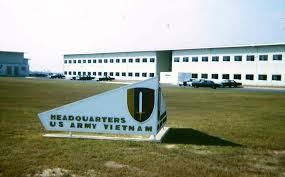

and IV Corps—centered at Can Tho; defense of the Mekong Delta and south. There was also a US consulate at Can Tho. It was abandoned by boat in 1975.
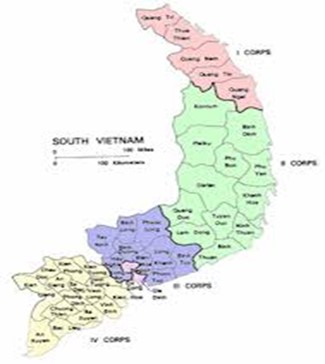

IV Corps was actually an ARVN (South Vietnamese Army) tactical zone. There was never a US command installation (i.e., no US corps-level HQ). To the extent that there was any American oversight, it came from III Corps (i.e., central command in Bien Hoa.) Considerable special ops here, however, with significant latitude in operations, including blocking or deterring river and other transport from Cambodia.
There had been a base camp and port constructed by the US Ninth Naval Infantry Division in 1966 at a location eleven kilometers west of the village of My Tho on a tributary of the Mekong.


For several years thereafter, operations were staged from there. It would become my base. The constructed port was called Đồng Tâm. The literal translation is “concentric,” but colloquially it came to be called something like “United in Heart and Thought.” What can I say, another example of the “winning hearts and minds” rubbish so loved by the politicians back home. It grew in size until late 1972 when the installation was turned over to ARVN control.
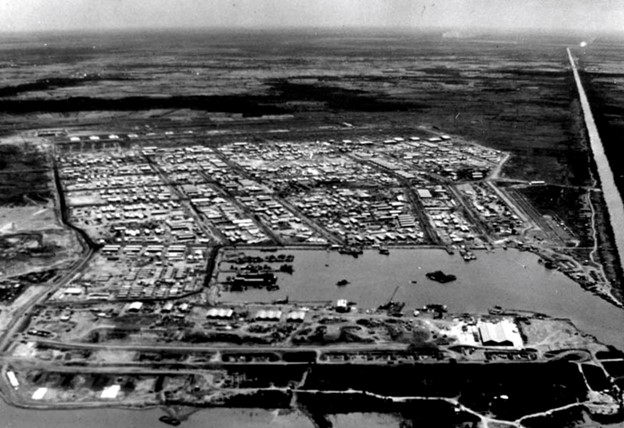



As noted earlier, operations had to consider weather. My window was dictated by it. The monsoon (technically, the southwest monsoon) occurred mid-May to mid-October and made the rivers and tributaries in the Mekong Delta impassable. For the remainder of the year, the northeast monsoon would bring heavy rains to the mountains and beyond but allow dry clearer weather on the delta.
The reason why INR was provided tasked status resulted from a very dark period in US intelligence history. The Phoenix Program(PP)/Phượng Hoàng started in July 1968, with the US involvement essentially over by the end of 1971, but overlapping with other operations. PP was primarily directed against the VCI (Viet Cong Infrastructure)—political and support underground in South Vietnam.
Some operations were redirected by Washington from the PRU (Provincial Reconnaissance Units). These were recruited by CIA and became the action arm of the operation. Specific CI (counterintelligence) operations were transferred from PP to an ad hoc operational unit within OIC. That was the 12 of us plus our support personnel.
Belief was strong that VC had thoroughly infiltrated the PRU and was using PP as a means further to destabilize the situation. Of course, ARVN was also settling old scores. By the end of 1972, 81,740 “neutralizations” (i.e., deaths) and 26,369 incarcerations were confirmed. A bloody disaster.
This Spy Tale entry involves one of these guys, my sole operational target.
My entire focus was one man—Quan Van Duc. Born on September 13, 1927 (21 years, 4 days older than I was at the time), he had dark hair, green eyes, was 5’ 10,” with a scar on his right cheek and two bullet wounds in his left shoulder. A Ph.D. in Marxist economics, Quan lectured at Lumumba University in Moscow and the Hanoi Central Command College. On those infrequent occasions when he would use his military designation, he would be referred to as a major general (two star). Quan was married to the daughter of an important member of the Vietnamese Communist Party Central Committee, had two daughters (both at the time being educated abroad), two mistresses (both local), and grew orchids. Spoke good French, excellent Russian and passable English.
Dr. Quan Van Duc was also CI director for what would become the Saigon-Gia Dinh Special Zone of operations assigned at the time to PLAF (Peoples Liberation Army of South Vietnam, the organized VC under direct command from Hanoi) Military Region 9—extreme southern Vietnam, based in and around Kien Giang province. He was strongly suspected of running the principal CI operations in III Corps and with infiltrating both ARVN and US operational offices.
Quan was codenamed KK (KayKay), a transliteration of con kên kên (Vietnamese for “vulture”). My assignment was to capture him alive by any means necessary.
My military cover (this was a theater of operations after all) was ONI, but they could care less. I was attached for operational purposes to SEALORDS (South East Asia Lake, Ocean, River and Delta Service), designated Naval Task Force 194 in the order of battle, under the command of COMNAVFORV (Commander of Naval Forces Vietnam). The task force was established by Vice Admiral Elmo Zumwalt, Jr in October 1968 and dissolved in 1972.
These were the “river rats” of the Brown Water Navy whose swift boats would show the flag in the Mekong Delta and interdict as much VC traffic as possible.
My authority superseded military chain of command for the scope of my operations. However, with only limited exceptions, I determined the scope of those operations. I had two PBR MK2 crafts: a five-man crew patrol boat; wide draft pump jet propulsion, highly maneuverable riverine combat vessel (i.e., a swift boat). It had a fiberglass reinforced plastic hull, excellent for high-speed movement in shallow water.
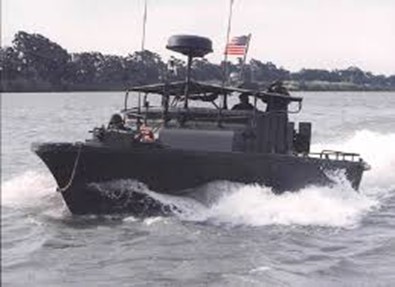

One I had the crew “adjust.” It was listed at 24 knots but after we modified it the craft could approach 50 knots with capability to leave the water, skim the land, and return at high speed (among other uses, it would scare the hell out of natives). Ordinance included one 60mm mortar, one 40 mm grenade launcher, and three 50 caliber machine guns (one twin, one single) designed for a maximum field coverage of 245 degrees.
My second swift boat, used in a support capacity, had been skippered by one Lt. John Kerry nineteen months earlier.
I also had access to whatever additional ordinance required. That would include armed airboats, and on two occasions attack helicopters–UH-1Ds second generation Hueys, the army’s main attack helicopters throughout the war.
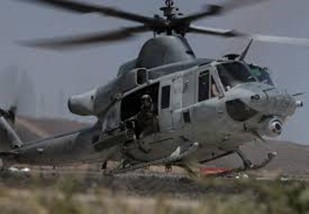

We simply borrowed what we needed and filled out bogus paperwork when we had to, occasionally changing registration numbers for some of the equipment in the process. Think of MASH, a jeep, and Radar O’Reilly.
During my operation, forty-nine personnel were at one time or another under my direct command. Thirty-four were killed including two of my original five crew members. One had three days remaining on his tour. I also deployed several hundred US and ARVN troops on various missions related to my primary objective. Casualty rate was about 40 percent for these personnel, higher for ARVN than Americans. On the final day of the operation, two of the three forward contingents I sent out, approximately forty-two personnel in all, were wiped out. I was in Cambodia on several occasions but only limited excursions up country. That was what probably saved my life, along with misreading a map.
Beginning on Monday, 15 March 1971 my final operational push began with one of the worst events I have ever experienced. Two elements make this tough. First, what happened was my decision. Second, I still am not allowed to talk about it.
I captured the target on a tributary of the Mekong River in the area of Ving Long province on Thursday, 15 April 1971. Two days upriver, two days debriefing, extracted to Ton Son Nut for immediate evac to Tokyo. Speed was essential at this point. Until out of zone, I would have a target on my back.
Little down time. Normally, being in a war theater has sporadic engagements interjected with boredom. Our project was under intense time constraints. That meant being always put at the sharp end of the stick and continuously bringing it to the other side.
There are a number of stories about my assignment but let me provide two that I can talk about at this point.
I lost my religion on a morning in early February 1971. I jumped off the boat early into mud up to my calves. Dumb thing to do. As I looked up I saw him. A VC on the hill pointing an AK-47 at me. I couldn’t move and figured that was it.
Now an AK-47 assault rifle is a marvelous invention. It was not unusual for American personnel on prolonged forward deployment to pick one up in preference to their M16.


Mikhail Kalashnikov developed a weapon with few moving parts, easy to disassemble in the field. But its primary advantage lay in something that we hated about the early versions of an M16. An AK-47 “banana clip” would rarely jam.
Except this time.
The guy on the hill extracted, then reasserted, the clip to free up the chamber and then squeezed off a round. Between him and me were locals working in a rice patty. From out of nowhere a young kid of maybe nine ran across the line of fire and had his head blown off. The noise rattled my crew and J.C. Gillies took the guy out with a machine gun salvo.
J.C. was a pimple-faced kid himself from a smudge on the map in West Texas. He had no social life, rarely said anything, and had not adjusted well to this war. But he was one hell of a shot. Later, I got him killed a few days before he was to ship home.
But that local Vietnamese kid has plagued me ever since. I gave up trying to rationalize why my life was more important than a nine year old. I concluded that, if god existed, he was busy messing up some other part of the world at the time.
Contrary to popular belief, I never found that religion had anything to do with foxholes.
The other story involves the day I captured Quan. Bordering on complete exhaustion, I misread a map. I showed up at the third of three points meant to be hit in sequence. The idea was to move him slowly into a trap created by smaller and less navigable waterways.
I had two others with me; the remaining crew stayed further upstream with the boat. We came around a corner and there he was squatted on the ground with a walkie talkie barking orders that were taking out the troops I sent to the first two points.
We had no idea whether he had personnel in the area and had to somehow set up a perimeter until I could call in an ARVN intel craft to transport Quan for interrogation. I didn’t want him to melt back into the brush.
So, I picked up his AK and blew off one of his kneecaps.
Later as we were moving upriver, the ARVN intel officers wanted to impress him with how much we knew about his life. They asked him how his wife was recovering from a recent gall bladder operation and whether his younger daughter was adjusting to school in France.
He was obviously in pain but did not show it. Instead of answering their questions, he looked at me and said in English, “How is you mother in Massachusetts?” They had to pull me off or I would have beaten him to a pulp.
As I noted in the last Spy Tales entry (“Duping an Agent’s Tail in Ҫeşme,” February 10, 2021), this event was what caused that letter of reprimand ending up in my file. Higher ups had no option since there were ARVN witnesses to my attacking a shackled prisoner.
Someday I hope to be able to talk about why I so hated him. Unfortunately, the main two episodes in what happened are still classified. The letter was later removed from my file, but my hatred for the bastard has not.
I came away finally understanding what was unfolding. The enemy may be living in tunnels, surviving on meager rations, and dying young. But it was their country, in which there had been at war against one outsider or a another for millennia.
I knew then we were not going to win this fight.
Coming home the poster boy for the entire OIC project hardly helped either. It gnawed at me that this success, and probably that I was still breathing, had only resulted from a mistake (the map misread). I tried to explain. Nobody cared. They started using my operation as a case study of how to accomplish a covert assignment, starting at the National Intelligence University in DC and then paralleled in counterinsurgency courses taught at military academies, “The Farm” and other training bases, as well as think tanks nationwide. Each rendition made it sound better than it was. It assumed a life of its own having little to do with what I had experienced.
Meanwhile, they really had no idea what to do with me. It had become clear the powers that be had not expected any of us to make it back alive. In eleven of the twelve instances, they were correct. I was the outlier.
Instead, they began shoveling medals at me.
Despite the five-year commitment, the government left me alone to finish graduate studies and begin university teaching. I went back this time to specialize in classical Greek political philosophy, obtained a Ph.D., wrote a dissertation on Plato, along with two subsequent less than best-selling books on the fellow and his period.
[As it happens, Plato will centrally figure in next week’s Spy Tale.]
The classical emphasis was simple, at least to me. I came back from Nam not trusting anybody born after Aristotle. Later my career would morph into the areas for which I am now known – energy policy, global risk analysis, and cross-border finance.
But within a few years, they were back. I signed a revised contract that put me in a whole different category of intel assignments and introduced me to the labyrinths of Langley, intel agencies, and the brotherhood of the “Great Game.”
Another time, some other stories. Pending, of course, “Mother’s” permission.


Dr. Kent Moors
This is an installment of Classified Intelligence Brief, your guide to what’s really happening behind the headlines… and how to profit from it.
Dr. Kent Moors served the United States for 30 years as one of the most highly decorated intelligence operatives alive today (including THREE Presidential commendations). After moving through the inner circles of royalty, oligarchs, billionaires, and the uber-rich, he discovered some of the most important secrets regarding finance, geo-politics, and business. As a result, he built one of the most impressive rolodexes in the world. His insights and network of contacts took him from a Vietnam veteran to becoming one of the globe’s most sought after consultants, with clients including six of the largest energy companies and the United States government.
Now, Dr. Moors is sharing his proprietary research every week… knowledge filtered through his decades as an internationally recognized professor and scholar, intelligence operative, business consultant, investor, and geo-political “troubleshooter.”
This publication is designed to give you an insider’s view of what is really happening on the geo-political stage. You can sign up for FREE to Classified Intelligence Brief and begin receiving insights from Dr. Moors and his team immediately.
Just click here – https://classifiedintelligencebrief.com/






